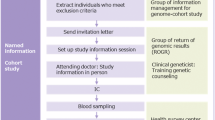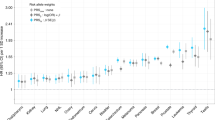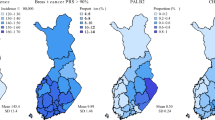Abstract
The potentially functional polymorphism, rs763110 (−844C>T), in the promoter region of the FAS ligand (FASL) gene, has been implicated in cancer risk, but individually published studies show inconclusive results. To derive a more precise estimation of the association between the FASL rs763110 and risk of cancer, we performed a meta-analysis of 19 published studies that included 11 105 cancer cases and 11 372 controls. We used odds ratios (ORs) and 95% confidence intervals (CIs) to assess the strength of the associations. Overall, the rs763110 CT and TT variant genotypes were associated with a significantly reduced cancer risk of all cancer types in different genetic models (homozygote comparison: OR=0.80, 95% CI: 0.68–0.95, Pheterogeneity=0.001; heterozygote comparison: OR=0.82, 95% CI: 0.72–0.95, Pheterogeneity<0.001; dominant model comparison: OR=0.82, 95% CI: 0.71–0.94, Pheterogeneity<0.001; and recessive model comparison: OR=0.88, 95% CI: 0.81–0.96, Pheterogeneity=0.074). In the stratified analyses, the risk remained for studies of the smoking-related cancers and Asian populations, or population-based studies in all the genetic models. Although some modest bias could not be eliminated, this meta-analysis suggests that the FASL rs763110 T allele has a possible protective effect on cancer risk.
Similar content being viewed by others
Log in or create a free account to read this content
Gain free access to this article, as well as selected content from this journal and more on nature.com
or
Accession codes
References
Green DR, Droin N, Pinkoski M : Activation-induced cell death in T cells. Immunol Rev 2003; 193: 70–81.
Maher S, Toomey D, Condron C, Bouchier-Hayes D : Activation-induced cell death: the controversial role of Fas and Fas ligand in immune privilege and tumour counterattack. Immunol Cell Biol 2002; 80: 131–137.
Chappell DB, Restifo NP : T cell-tumor cell: a fatal interaction? Cancer Immunol Immunother 1998; 47: 65–71.
Ju ST, Panka DJ, Cui H et al: Fas(CD95)/FasL interactions required for programmed cell death after T-cell activation. Nature 1995; 373: 444–448.
Griffith TS, Brunner T, Fletcher SM, Green DR, Ferguson TA : Fas ligand-induced apoptosis as a mechanism of immune privilege. Science 1995; 270: 1189–1192.
O’Connell J, O’Sullivan GC, Collins JK, Shanahan F : The Fas counterattack: Fas-mediated T cell killing by colon cancer cells expressing Fas ligand. J Exp Med 1996; 184: 1075–1082.
Crnogorac-Jurcevic T, Efthimiou E, Capelli P et al: Gene expression profiles of pancreatic cancer and stromal desmoplasia. Oncogene 2001; 20: 7437–7446.
Niehans GA, Brunner T, Frizelle SP et al: Human lung carcinomas express Fas ligand. Cancer Res 1997; 57: 1007–1012.
Bennett MW, O’Connell J, O’Sullivan GC et al: The Fas counterattack in vivo: apoptotic depletion of tumor-infiltrating lymphocytes associated with Fas ligand expression by human esophageal carcinoma. J Immunol 1998; 160: 5669–5675.
Houston A, O’Connell J : The Fas signalling pathway and its role in the pathogenesis of cancer. Curr Opin Pharmacol 2004; 4: 321–326.
Wu J, Metz C, Xu X et al: A novel polymorphic CAAT/enhancer-binding protein beta element in the FasL gene promoter alters Fas ligand expression: a candidate background gene in African American systemic lupus erythematosus patients. J Immunol 2003; 170: 132–138.
Zhang Z, Wang LE, Sturgis EM et al: Polymorphisms of FAS and FAS ligand genes involved in the death pathway and risk and progression of squamous cell carcinoma of the head and neck. Clin Cancer Res 2006; 12: 5596–5602.
Crew KD, Gammon MD, Terry MB et al: Genetic polymorphisms in the apoptosis-associated genes FAS and FASL and breast cancer risk. Carcinogenesis 2007; 28: 2548–2551.
Krippl P, Langsenlehner U, Renner W, Koppel H, Samonigg H : Re: Polymorphisms of death pathway genes FAS and FASL in esophageal squamous-cell carcinoma. J Natl Cancer Inst 2004; 96: 1478–1479; author reply 1479.
Zhang B, Sun T, Xue L et al: Functional polymorphisms in FAS and FASL contribute to increased apoptosis of tumor infiltration lymphocytes and risk of breast cancer. Carcinogenesis 2007; 28: 1067–1073.
Sun T, Zhou Y, Li H et al: FASL −844C polymorphism is associated with increased activation-induced T cell death and risk of cervical cancer. J Exp Med 2005; 202: 967–974.
Lai HC, Lin WY, Lin YW et al: Genetic polymorphisms of FAS and FASL (CD95/CD95L) genes in cervical carcinogenesis: an analysis of haplotype and gene-gene interaction. Gynecol Oncol 2005; 99: 113–118.
Kang S, Dong SM, Seo SS, Kim JW, Park SY : FAS −1377 G/A polymorphism and the risk of lymph node metastasis in cervical cancer. Cancer Genet Cytogenet 2008; 180: 1–5.
Ivansson EL, Gustavsson IM, Magnusson JJ et al: Variants of chemokine receptor 2 and interleukin 4 receptor, but not interleukin 10 or Fas ligand, increase risk of cervical cancer. Int J Cancer 2007; 121: 2451–2457.
Li C, Wu W, Liu J et al: Functional polymorphisms in the promoter regions of the FAS and FAS ligand genes and risk of bladder cancer in south China: a case-control analysis. Pharmacogenet Genomics 2006; 16: 245–251.
Zhang X, Miao X, Sun T et al: Functional polymorphisms in cell death pathway genes FAS and FASL contribute to risk of lung cancer. J Med Genet 2005; 42: 479–484.
Park SH, Choi JE, Kim EJ et al: Polymorphisms in the FAS and FASL genes and risk of lung cancer in a Korean population. Lung Cancer 2006; 54: 303–308.
Ter-Minassian M, Zhai R, Asomaning K et al: Apoptosis gene polymorphisms, age, smoking and the risk of non-small cell lung cancer. Carcinogenesis 2008; 29: 2147–2152.
Zhang H, Sun XF, Synnerstad I, Rosdahl I : Importance of FAS-1377, FAS-670, and FASL-844 polymorphisms in tumor onset, progression, and pigment phenotypes of Swedish patients with melanoma: a case-control analysis. Cancer J 2007; 13: 233–237.
Li C, Larson D, Zhang Z et al: Polymorphisms of the FAS and FAS ligand genes associated with risk of cutaneous malignant melanoma. Pharmacogenet Genomics 2006; 16: 253–263.
Sun T, Miao X, Zhang X, Tan W, Xiong P, Lin D : Polymorphisms of death pathway genes FAS and FASL in esophageal squamous-cell carcinoma. J Natl Cancer Inst 2004; 96: 1030–1036.
Hsu PI, Lu PJ, Wang EM et al: Polymorphisms of death pathway genes FAS and FASL and risk of premalignant gastric lesions. Anticancer Res 2008; 28: 97–103.
Gormus U, Ergen A, Yilmaz H, Dalan B, Berkman S, Isbir T : Fas-1377A/G and FasL-844 T/C gene polymorphisms and epithelial ovarian cancer. Anticancer Res 2007; 27: 991–994.
Erdogan M, Karadeniz M, Berdeli A et al: Fas/Fas ligand gene polymorphism in patients with papillary thyroid cancer in the Turkish population. J Endocrinol Invest 2007; 30: 411–416.
Yang M, Sun T, Wang L et al: Functional variants in cell death pathway genes and risk of pancreatic cancer. Clin Cancer Res 2008; 14: 3230–3236.
Qiu D, Kurosawa M, Lin Y et al: Overview of the epidemiology of pancreatic cancer focusing on the JACC Study. J Epidemiol 2005; 15 (Suppl 2): S157–S167.
Wei Q, Cheng L, Amos CI et al: Repair of tobacco carcinogen-induced DNA adducts and lung cancer risk: a molecular epidemiologic study. J Natl Cancer Inst 2000; 92: 1764–1772.
Cohen SM, Shirai T, Steineck G : Epidemiology and etiology of premalignant and malignant urothelial changes. Scand J Urol Nephrol Suppl 2000; 205: 105–115.
Blot WJ, McLaughlin JK, Winn DM et al: Smoking and drinking in relation to oral and pharyngeal cancer. Cancer Res 1988; 48: 3282–3287.
Au WW, Abdou-Salama S, Sierra-Torres CH, Al-Hendy A : Environmental risk factors for prevention and molecular intervention of cervical cancer. Int J Hyg Environ Health 2007; 210: 671–678.
Persson I : Estrogens in the causation of breast, endometrial and ovarian cancers – evidence and hypotheses from epidemiological findings. J Steroid Biochem Mol Biol 2000; 74: 357–364.
Mantel N, Haenszel W : Statistical aspects of the analysis of data from retrospective studies of disease. J Natl Cancer Inst 1959; 22: 719–748.
DerSimonian R, Laird N : Meta-analysis in clinical trials. Control Clin Trials 1986; 7: 177–188.
Whitehead A, Whitehead J : A general parametric approach to the meta-analysis of randomized clinical trials. Stat Med 1991; 10: 1665–1677.
Egger M, Davey Smith G, Schneider M, Minder C : Bias in meta-analysis detected by a simple, graphical test. BMJ 1997; 315: 629–634.
Thakkinstian A, McElduff P, D’Este C, Duffy D, Attia J : A method for meta-analysis of molecular association studies. Stat Med 2005; 24: 1291–1306.
Kabelitz D, Pohl T, Pechhold K : Activation-induced cell death (apoptosis) of mature peripheral T lymphocytes. Immunol Today 1993; 14: 338–339.
DeBruin LS, Josephy PD : Perspectives on the chemical etiology of breast cancer. Environ Health Perspect 2002; 110 (Suppl 1): 119–128.
Suzuki N, Wakisaka S, Takeba Y, Mihara S, Sakane T : Effects of cigarette smoking on Fas/Fas ligand expression of human lymphocytes. Cell Immunol 1999; 192: 48–53.
Elnemr A, Ohta T, Yachie A et al: Human pancreatic cancer cells express non-functional Fas receptors and counterattack lymphocytes by expressing Fas ligand; a potential mechanism for immune escape. Int J Oncol 2001; 18: 33–39.
Kelsey JL, Gammon MD : The epidemiology of breast cancer. CA Cancer J Clin 1991; 41: 146–165.
Song RX, Santen RJ : Apoptotic action of estrogen. Apoptosis 2003; 8: 55–60.
Akhmedkhanov A, Zeleniuch-Jacquotte A, Toniolo P : Role of exogenous and endogenous hormones in endometrial cancer: review of the evidence and research perspectives. Ann NY Acad Sci 2001; 943: 296–315.
Mor G, Kohen F, Garcia-Velasco J et al: Regulation of fas ligand expression in breast cancer cells by estrogen: functional differences between estradiol and tamoxifen. J Steroid Biochem Mol Biol 2000; 73: 185–194.
Dong L, Wang W, Wang F et al: Mechanisms of transcriptional activation of bcl-2 gene expression by 17beta-estradiol in breast cancer cells. J Biol Chem 1999; 274: 32099–32107.
Acknowledgements
We thank Qingyi Wei (Department of Epidemiology, The University of Texas MD Anderson Cancer Center) for critical comments and scientific editing and Guangfu Jin for his assistance in data analysis.
This study was partly supported by the National Natural Science Foundation of China (30271105, 30571583, 30800926, and 30872084), the PhD Programs Foundation of Ministry of Education of China (20060312002), the Natural Science Foundation of Jiangsu Province (BK2006231), the Postdoctoral Science Foundation of China (20060390293), the Postdoctoral Science Foundation of Jiangsu Province (0601049) and ‘Qinglan Project’ Foundation for the Young Academic Leader of Jiangsu Province (2006).
Author information
Authors and Affiliations
Corresponding authors
Rights and permissions
About this article
Cite this article
Zhang, Z., Qiu, L., Wang, M. et al. The FAS ligand promoter polymorphism, rs763110 (−844C>T), contributes to cancer susceptibility: evidence from 19 case–control studies. Eur J Hum Genet 17, 1294–1303 (2009). https://doi.org/10.1038/ejhg.2009.45
Received:
Revised:
Accepted:
Published:
Issue date:
DOI: https://doi.org/10.1038/ejhg.2009.45
Keywords
This article is cited by
-
Susceptibility to oral cancers with CD95 and CD95L promoter SNPs may vary with the site and gender
Tumor Biology (2015)
-
FasL Gene -844T/C Mutation of Esophageal Cancer in South China and Its Clinical Significance
Scientific Reports (2014)
-
Associations between Fas/FasL polymorphisms and susceptibility to cervical cancer: a meta-analysis
Tumor Biology (2014)
-
Association between CD95L polymorphism and cervical cancer risk: evidence from a meta-analysis
Tumor Biology (2014)
-
CD95 rs1800682 polymorphism and cervical cancer risk: evidence from a meta-analysis
Tumor Biology (2014)



